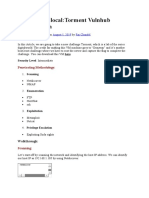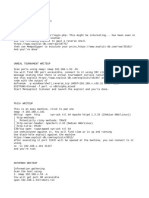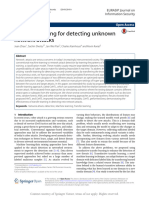0% found this document useful (0 votes)
30 views2 pagesLecture 6 Codes
The document describes four methods to establish a reverse shell connection from a target machine to an attacker's machine:
1. Using Netcat to execute a shell that connects back to the attacker's IP and port.
2. Using Bash to execute a shell that connects back via TCP.
3. Using a Python script to create a socket connection, duplicate file descriptors, and execute a reverse shell.
4. Using a PHP code snippet to open a socket connection and execute a reverse shell that redirects stdin, stdout, and stderr over the socket.
Uploaded by
Max RiddleCopyright
© © All Rights Reserved
We take content rights seriously. If you suspect this is your content, claim it here.
Available Formats
Download as DOCX, PDF, TXT or read online on Scribd
0% found this document useful (0 votes)
30 views2 pagesLecture 6 Codes
The document describes four methods to establish a reverse shell connection from a target machine to an attacker's machine:
1. Using Netcat to execute a shell that connects back to the attacker's IP and port.
2. Using Bash to execute a shell that connects back via TCP.
3. Using a Python script to create a socket connection, duplicate file descriptors, and execute a reverse shell.
4. Using a PHP code snippet to open a socket connection and execute a reverse shell that redirects stdin, stdout, and stderr over the socket.
Uploaded by
Max RiddleCopyright
© © All Rights Reserved
We take content rights seriously. If you suspect this is your content, claim it here.
Available Formats
Download as DOCX, PDF, TXT or read online on Scribd
/ 2































































